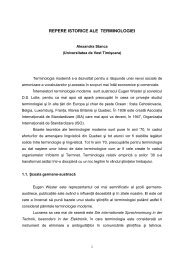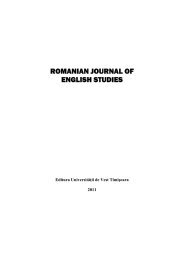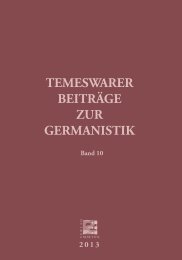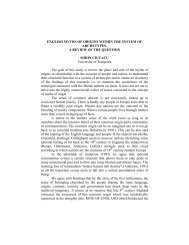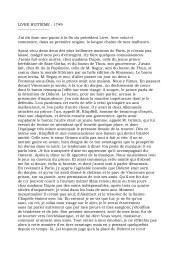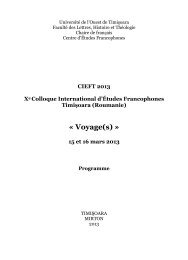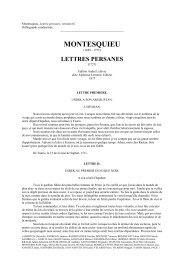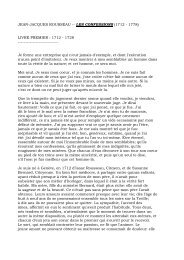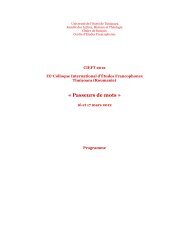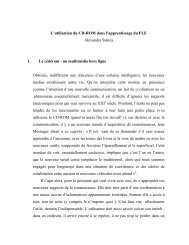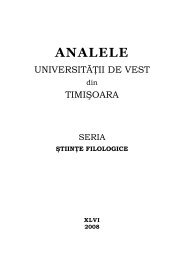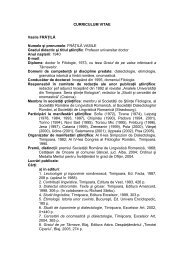TRANSLATION AND MEANING: A CULTURAL- COGNITIVE ...
TRANSLATION AND MEANING: A CULTURAL- COGNITIVE ...
TRANSLATION AND MEANING: A CULTURAL- COGNITIVE ...
Create successful ePaper yourself
Turn your PDF publications into a flip-book with our unique Google optimized e-Paper software.
similar in style or effect to the source text, the evaluator controls mainly the<br />
linguistic expression in the target language.<br />
B. The check on TT qualities focuses on:<br />
• sentence grammaticalness;<br />
• appropriateness of word choice to the required level of<br />
formality, level of generality and subject matter;<br />
• text connectedness, i.e. the coherence, cohesion and structure<br />
of paragraphs and global text;<br />
• the stylistic qualities of clarity, naturalness and fluency of<br />
expression.<br />
The adjustments of the target text are modifications of the types:<br />
addition, elimination or harmonization. At this stage of revision the<br />
translator may have to add the figures of units of measurements which<br />
require transformations or cultural terms left deliberately provisional until<br />
the whole text has been translated. Other modifications involve eliminations<br />
of source language interferences, e.g. anglicisms, which account for many<br />
translation errors, and harmonization of the final draft translated by different<br />
translators (Sager, 1993:239). Harmonization is performed to ensure the<br />
target text uniformity in terms of terminology and style.<br />
Evaluation and revision procedures<br />
The procedures used at this stage, just like at the other stages, are<br />
determined by the goals to be reached and the actions to be carried out (see<br />
Table below). For evaluating the target text quality the evaluator uses<br />
strategies such as checking, comparing, asking the source-text writer or<br />
initiator for clarification, verifying, identifying errors, and assessing the<br />
communicative effects of errors. As techniques, he/she makes recourse to<br />
parallel reading of the source and target text and re-reading the target text<br />
for intrinsic qualities. Revisers generally use markings and comments.<br />
For adjusting the target-text content and form, translators and<br />
revisers use the method of modification. The main strategy of this step is<br />
correcting, while the techniques are rephrasing, re-structuring, addition,<br />
elimination, harmonization of style and terminology, which are general<br />
writing techniques. For grave errors, translators/revisers may use the same<br />
techniques as those used in the translation stage.<br />
Goals Methods<br />
Evaluating the target<br />
text with respect to<br />
Self<br />
evaluation<br />
Strategies<br />
Checking<br />
Comparing<br />
Techniques<br />
Parallel reading<br />
Re-reading



